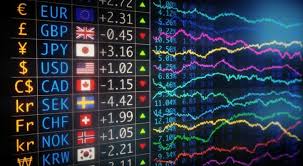
The world of Forex trading has undergone significant transformations over the past decade, and one of the most impactful changes has been the emergence of artificial intelligence (AI). With technology advancing rapidly, ai trading forex minereum.com has become a beacon for traders seeking to integrate sophisticated algorithms and machine learning techniques into their trading strategies. In this article, we will explore the essence of AI trading in the forex market, its advantages, challenges, and future prospects.
Understanding AI in Forex Trading
AI trading refers to the use of computer algorithms and deep learning models to automate trades and analyze market trends. By leveraging vast amounts of historical data, AI systems can identify patterns and make predictions on currency price movements with remarkable accuracy. This integration of AI in Forex trading has translated into faster decision-making processes that can significantly outperform manual trading methodologies.
Why AI Trading is Gaining Popularity
There are several reasons why traders and financial institutions are increasingly turning to AI for forex trading:
- Speed: AI systems can process and analyze data at incredible speeds, allowing traders to capitalize on even the slightest market fluctuations.
- Emotionless Trading: AI eliminates emotional biases, which can often cloud judgment in trading decisions.
- Data Analysis: AI can analyze vast amounts of data, uncovering trends and correlations that may not be visible to human traders.
- Risk Management: AI systems can help in identifying risk factors and mitigating potential losses through optimized strategies.
The Mechanisms Behind AI Trading
At the core of AI trading technologies are algorithms that employ machine learning and deep learning. These algorithms are trained using vast datasets that include historical price movements, economic indicators, social media sentiment, and geopolitical events. Here’s how these technologies come into play:
Machine Learning
Machine learning allows AI systems to learn from historical data and improve their predictions as they encounter new data. In Forex trading, this means that the AI can refine its algorithms over time based on market conditions, leading to increasingly accurate predictions.
Deep Learning

Deep learning, a subset of machine learning, uses neural networks to simulate human brain functions. This approach can analyze complex datasets, making it particularly effective in capturing non-linear relationships in Forex markets. It is particularly useful for tasks such as sentiment analysis, where it can evaluate news articles and social media posts to gauge market sentiment.
Benefits of AI Trading
The benefits of incorporating AI into Forex trading are manifold:
- Enhanced Profitability: AI can optimize trading strategies to maximize returns.
- Automation: Traders can automate their trading processes, freeing up time for analysis and strategy development.
- Reduced Costs: By automating trades and improving efficiencies, AI can help reduce trading costs.
- 24/7 Trading: AI systems can operate continuously, monitoring the markets day and night without fatigue.
Challenges of AI Trading
Despite the advantages, the integration of AI in Forex trading is not without its challenges:
- Data Quality: The performance of AI models heavily relies on the quality of data fed into them. Poor data can lead to inaccurate predictions.
- Market Volatility: Markets can be unpredictable, and sudden changes can lead to losses. AI must be constantly updated to accommodate these market dynamics.
- Regulatory Compliance: As AI trading grows, regulators are trying to establish guidelines to ensure fair practices and protect investors.
- Technical Failures: Like any technology, AI systems are prone to errors or malfunctions, which can significantly impact trading outcomes.
Future Perspectives for AI in Forex Trading
Looking ahead, the role of AI in Forex trading is likely to grow even more prominent. As technology continues to evolve, we can expect improvements in natural language processing, enabling AI to better interpret news articles or economic reports. Additionally, advances in quantum computing hold the potential to revolutionize data processing capabilities, pushing the boundaries of what AI can achieve in trading.
Moreover, as AI technologies become more accessible, retail traders are likely to gain access to sophisticated trading systems that were once confined to large financial institutions. This democratization of AI trading will create a more level playing field in the Forex market, allowing individual traders to benefit from cutting-edge technology.
Conclusion
AI trading in Forex represents a significant advancement in the way currency markets are analyzed and traded. With its ability to process data at unprecedented speeds, make emotionless decisions, and optimize trading strategies, AI is transforming the trading landscape. However, traders must remain aware of the challenges and risks involved in implementing AI technologies. As the future unfolds, those who embrace and adapt to these changes are likely to find themselves at a competitive advantage in the dynamic world of Forex trading.